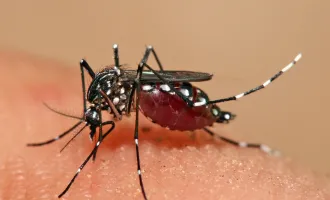The CSI Effect: Science ‘As Seen on TV’
When was the last time you were sitting down after a hard day’s work, unwinding with your favorite crime drama such as CSI: Crime Scene Investigation and you thought to yourself, “Really? They caught the guy because they found a leg from the Rubarura bug on the hem of the victim’s left pant leg and the killer just happens to live on the only street in the world that particularly bug inhabits? Uh huh, riiiiight.”
Which begs the question: how accurate are crime shows and do their inaccuracies have any effect on the real world, a so-called “CSI effect”?
Dr. Judy Melinek, a medical examiner and Assistant Clinical Professor of Pathology at the UCSF Medical Center, sat down with me to try and shed light on the topic. She recently posted an article, “7 CSI Fails,” on her Pathology Expert blog that goes into further detail about the errors television crime shows consistently make.
“CSI effect” is a term that was first coined by prosecutors to describe their perceived drop in conviction rates due to jurors’ hesitancy to give a guilty verdict if a case is lacking in forensic evidence. Prosecutors attributed the drop to the portrayal of how important forensic findings are in crime shows, like CSI and Bones.
No studies have supported the claim that such a decline in conviction rates exists, but Melinek does write that, “As an expert witness in forensic pathology I see the CSI effect when I'm faced with questions like, ‘Why can't you tell us the precise time of death down to the minute, like on TV?’”
Forensic pathology isn’t the only medical field that is portrayed imprecisely. Melinek has also consulted for TV shows such as ER, and though she said that the producers take your advice into consideration, such as her consultation on the scene about how a patient’s make-up should be redone, unfortunately, “They often get the details right, but they get the sequence wrong.”
Many medical and medico-legal shows also utilize technology far beyond what is used today—call it creative license. TV investigators receive DNA and lab results within hours, when in reality such things take weeks to months to run. An official autopsy report, complete with toxicology and histology, takes months to complete.
Melinek also discussed whether crime shows can help criminals learn how to cover up their crimes and if it’s true that in order to work closely with the deceased you must be more detached than most people.
While it’s true that there has been at least one example of a serial killer planning out his crimes based on what he learned from television shows, “very few people are sociopaths,” said Melinek. “They end up giving themselves away in other ways.” And, in fact, the aforementioned killer, Cary Stayner (The Yosemite Killer), was caught due to several rectifiable oversights.
Citing the forensic anthropologist Dr. Temperance Brennan from Bones as a prime example of the misconception that the best forensic investigators are somewhat antisocial, Melinek emphasizes that, “empathy is important… having empathy doesn’t mean you can’t be objective.”
“If you can’t communicate, you’re not doing your job either,” she added.
A prime example of this disconnect comes in an episode of Bones when Dr. Brennan, who is portrayed in the first several seasons as highly practical and unfeeling, must testify against the defense’s very charismatic expert witness. She has to learn how to alter her speech to win the jury’s favor.
Melinek also addressed the perception that medical examiners are an “arm of the prosecution,” which flies in the face of their work as objective investigators. In a paper titled, “The Ethics of Working as a Retained Forensic Expert,” Melinek explored the tactics used by the prosecution to persuade government-employed medical examiners to serve, not as an independent expert, but as a tool for conviction. She argued that this view of medical examiners might be changed if all counties hired medical examiners as private contractors instead.
So, if you are a crime show fan and you have the opportunity to serve as a juror, just remember to take everything you have watched on TV with a brick of salt and don’t apply the realities of the TV world to the trial in front of you.
To learn more about the science of forensic pathology, check out Melinek’s blog http://www.pathologyexpert.com/drjudymelinek/ and look out for her book, Working Stiff, due out in August.



